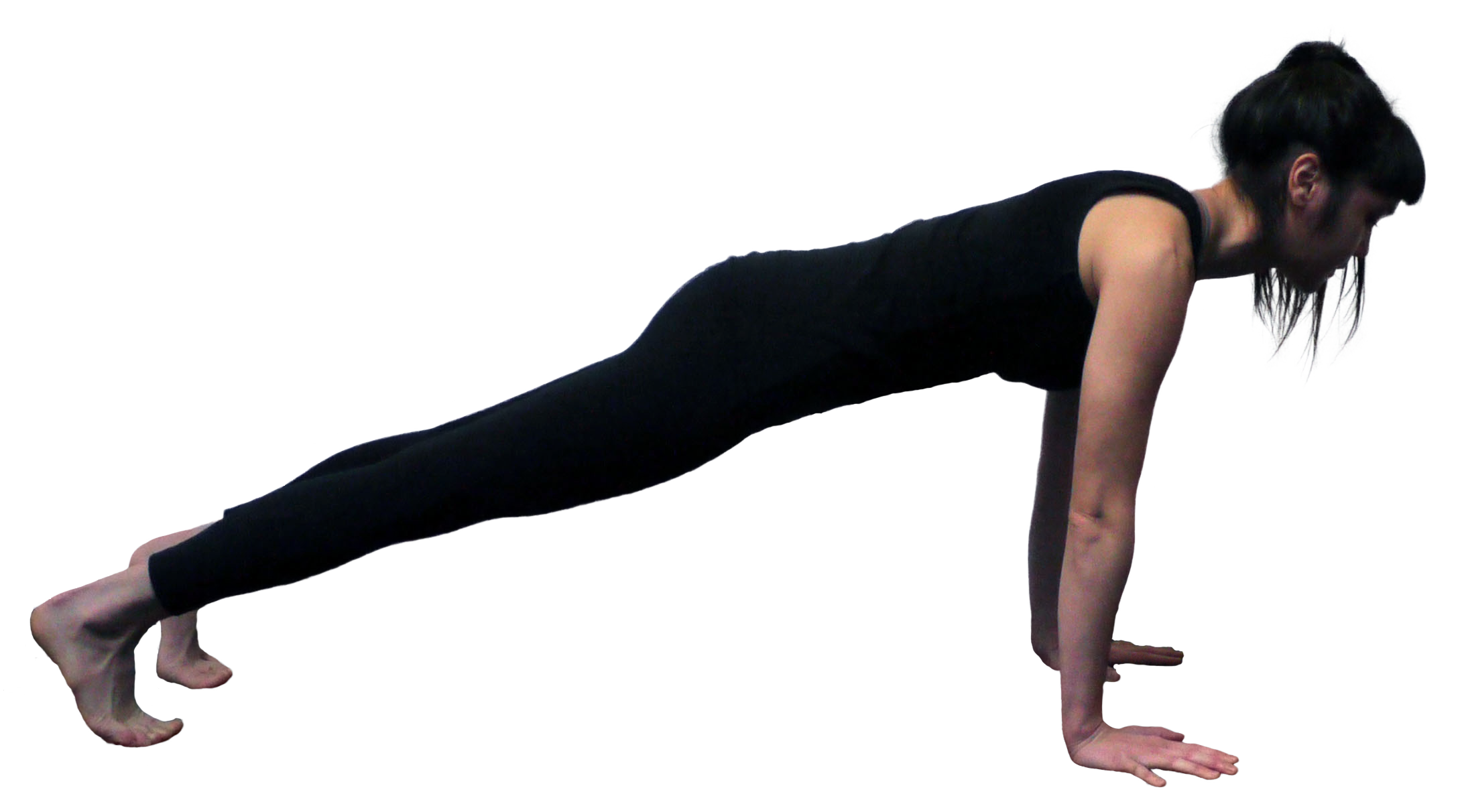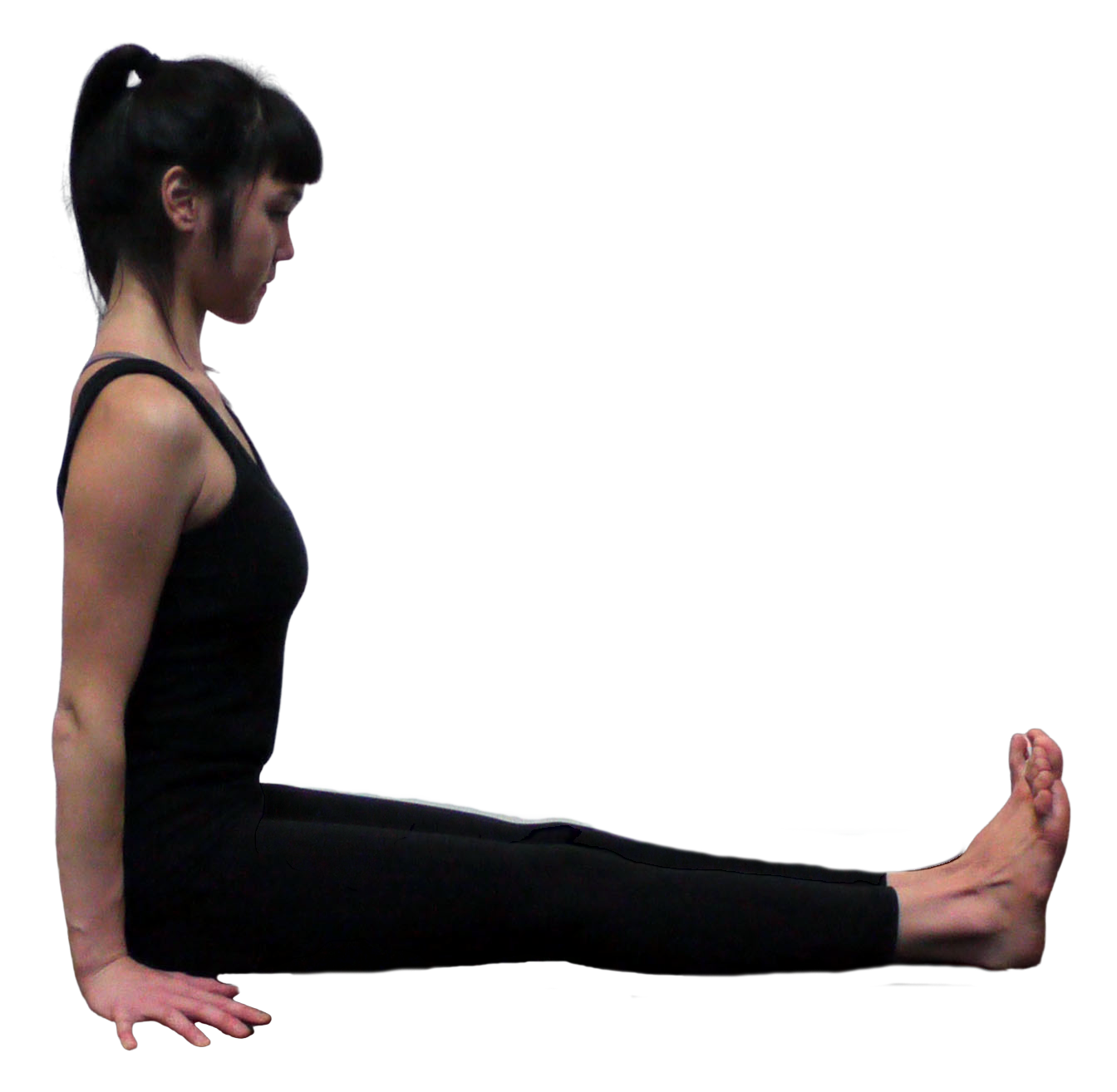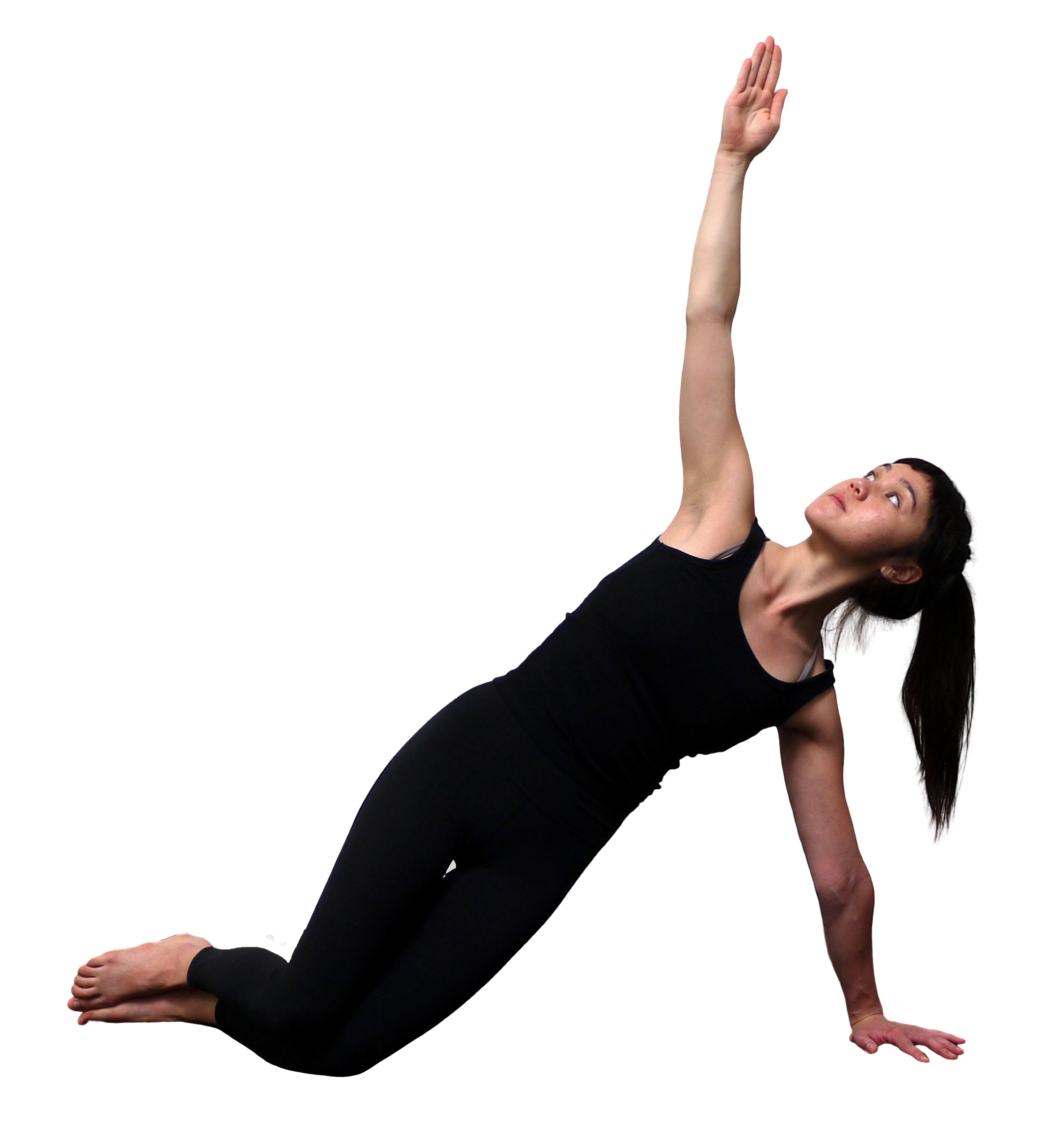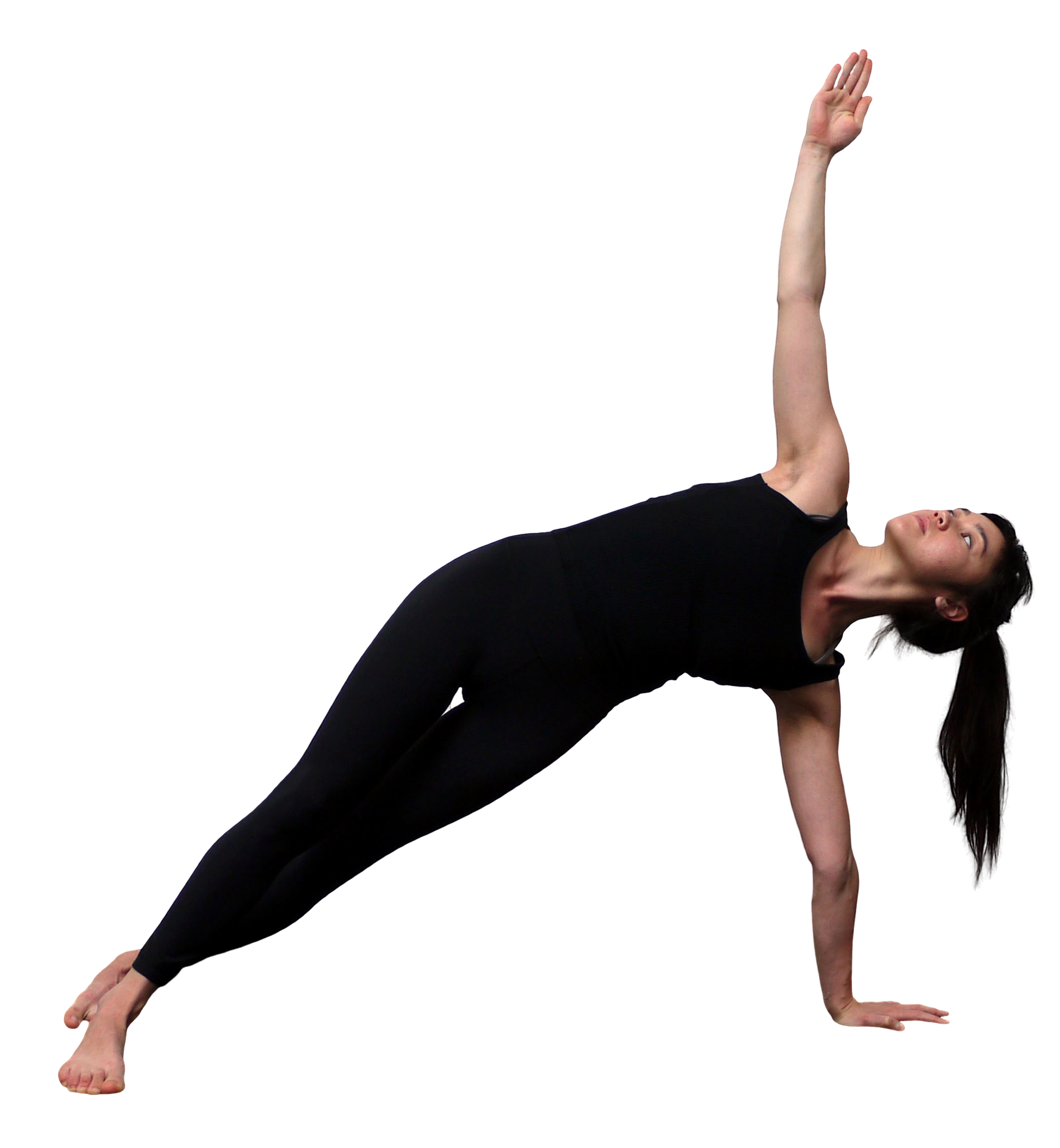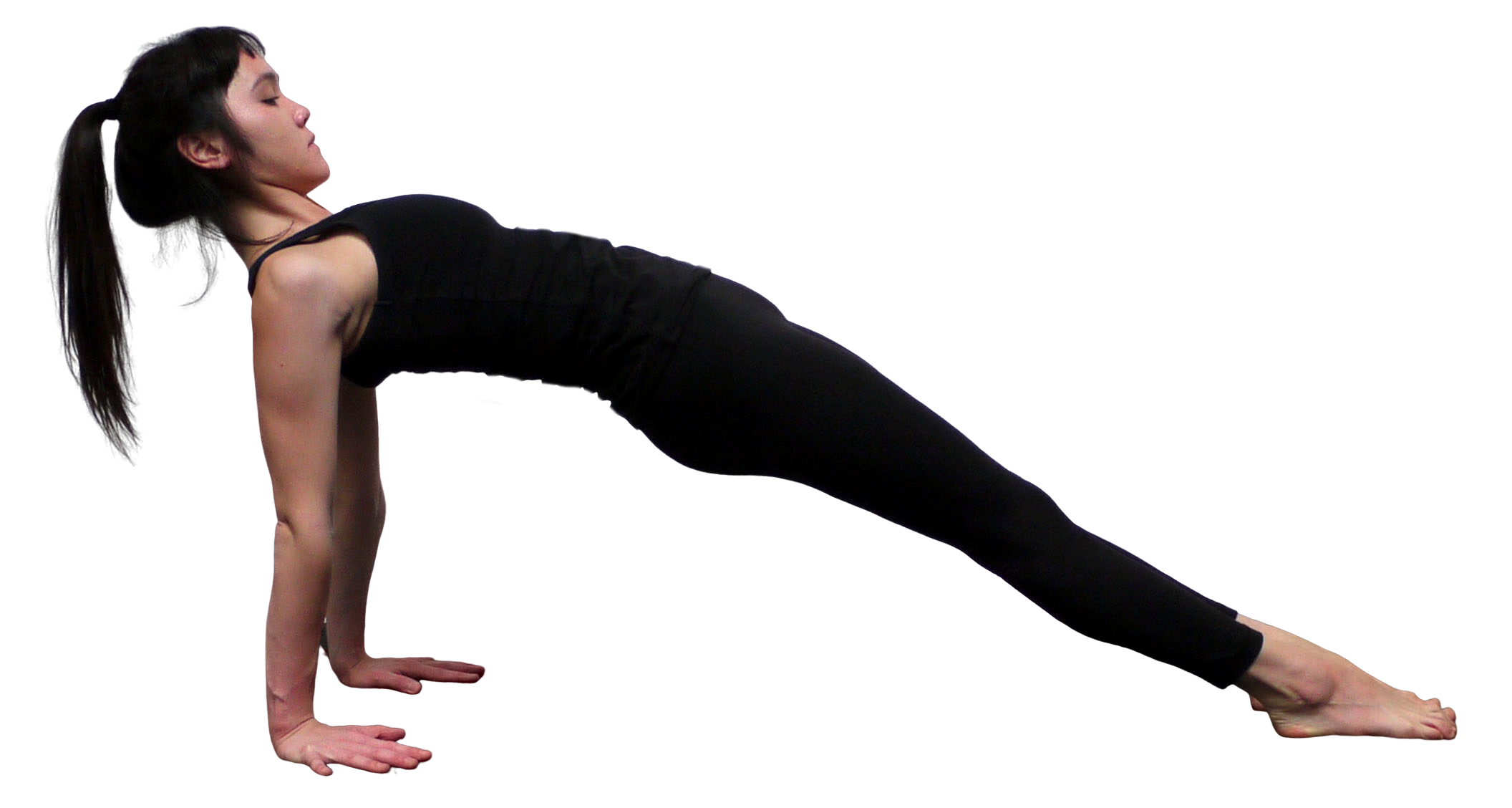The value of Plank pose and its variations
In my opinion, plank and its variations should be considered foundation poses (i.e. ones that are basic and a necessary requirement to practising the more challenging asanas). Other such foundation poses are Dandasana and Samasthiti.
The idea is that we are able to hold the ribs and pelvis in the same relationship as when we are standing upright. With plank variations, it requires a lot of muscular effort to maintain this relationship, and as a result we become much stronger in the torso and upper body muscles.
Samasthiti - this asana teaches us the balanced alignment of the spine, ribs and pelvis.
Dandasana - we maintain this relationship of the spine, ribs and pelvis as we are in a seated position.
Plank - we maintain this relationship but now it is much more challenging for the abdominal, chest, shoulder and arm muscles.
With yoga asanas, it is common to focus on the postures that increase flexibility, but it’s really important to make sure we have the strength to support that flexibility, otherwise we could end up injured. This doesn’t mean that everyone has to do all the full versions of plank, it just means we need to include asanas (appropriate for us as individuals) that strengthen our torso muscles from different angles in our regular practice.
HOW CAN WE MAKE PLANK EASIER AND MORE ACCESSIBLE?
We can make the pose easier by creating more support and reducing the load the muscles have to carry. Obvious variations are lowering the knees to the floor whilst maintaining a straight line from your knees through to your head. Practising in this way changes the angle and reduces the load. If someone still finds this too challenging, the knees can be placed underneath the hip joints (see picture below). We don’t typically think of this as a version of plank, but it can be. It allows us to gradually build strength in the torso and upper body and then move the knees further back as we improve. We can lift one arm or one leg to add challenge as well.
Chakravakasana variation - this can be used as a modification of plank to build up strength.
You can practice pushing away from the floor with your arms and pulling the chest away from the floor as a stepping stone to developing strength for Plank.
WHAT TO DO IF YOUR WRISTS DON’T LIKE THE POSE
It is very common for people to either be too flexible in the wrists or be too tight. When the upper arm, forearm and hand muscles are not strong enough, it will sometimes hurt to weight bear on the wrists. If this is the case, you need to choose easier versions and make sure you are gripping your fingers into the floor (to activate the muscles) and not hyper-extending your elbows. Over time you will build up strength and be able to progress to the more challenging variations.
If your muscles that cross your wrist are very tight, this will also cause discomfort. You will need to gradually stretch these muscles and in the mean time you can practice the plank (forward version) on your fists or forearms.
Many people have sore wrists and need to modify the posture. This one is easier on the wrists but more challenging for every other part!
Vasisthasana on the forearm
PLANK POSE PREPARES YOU FOR MORE DIFFICULT ASANAS
Chaturanga dandasana requires that we are first able to hold a Plank position then bend our elbows to bring the chest in front of the hands. Without the strength developed from practising Plank, Chaturanga dandasana can put a lot of strain into the neck, shoulder and wrist muscles. I find when teaching Surya namaskar, Plank can be a very good substitute for Chaturanga dandasana until the person can develop the appropriate amount of strength to make Chaturanga dandasana safe.
Arm balances are a natural progression if you find Plank variations easy. Now we are shifting the whole weight of the body forward to be balanced on the arms. This requires adequate wrist flexibility, strength in the fingers and wrist flexor muscles, as well as increasing levels of abdominal and upper body strength. All of these requirements can be developed by practising the numerous variations of Plank.
Chaturanga dandasana
Bakasana will be almost impossible if you haven’t developed enough abdominal and upper body strength.
SIDE PLANK VARIATIONS
Now we are turning our body to the side and trying to maintain that same alignment relationship between the pelvis, spine, ribcage and head. This is often where people discover they are much stronger on one side than the other. This imbalance may not be obvious when we are standing upright, but it becomes glaringly obvious in these asanas. This hidden imbalance in your torso muscles could be causing hip problems, lower back problems and even shoulder and neck issues. It’s not important to be able to do the hardest versions of side plank. What is important is to be equally strong in whichever versions you choose to practice. If you have a weaker side, build it up until it is as strong as your other side. You can do this by repeating the asana on your weaker side. If your right side is weaker, an example of this would be, stay for 6 breaths on your right, 6 breaths on your left, then 6 breaths on your right again. Once you feel your right side has caught up (which may take weeks or months), work towards 10 breaths on each side.
People who have scoliosis, or one leg longer than the other, will often find an imbalance in strength from side to side. This is a natural consequence of the difference in the bony structures. By building up the weaker side muscles, we can prevent some of the pain that can develop over time as a result of the natural imbalance.
Easier side plank variation
Side plank variation
Side plank variation adding challenge
Vasisthasana - one of the more challenging variations
UPWARD PLANK VARIATIONS
This set of asanas are now challenging us in an entirely different way. We need to develop strength in our upper back muscles, our gluteal muscles, the abdominals again (to help maintain the position of the pelvis) and we need to develop flexibility in the chest and shoulders.
Purvottanasana variation
Purvottanasana
Taking your head back is not recommended if you have neck issues or a head forward posture. It will be better to look forward and strengthen your neck flexors instead.
THE FUNCTION OF ASANAS
When we sequence our asana practice we need to be thinking of the functions each asana has. What is this posture doing for me? Which parts of my body is it strengthening? Which muscles is it lengthening? Is that a good idea for my body?
By practising some of these variations from each group, we are strengthening the back, sides and front of our body. It is inevitable that some of these will be easier than others. To create a balance of strength around the torso we should aim to be strong and stable from all angles.
written by Jean Campbell
Interested in learning more about how anatomy relates to yoga practice?
Have a look at my Online Dynamic Yoga Anatomy Course.
